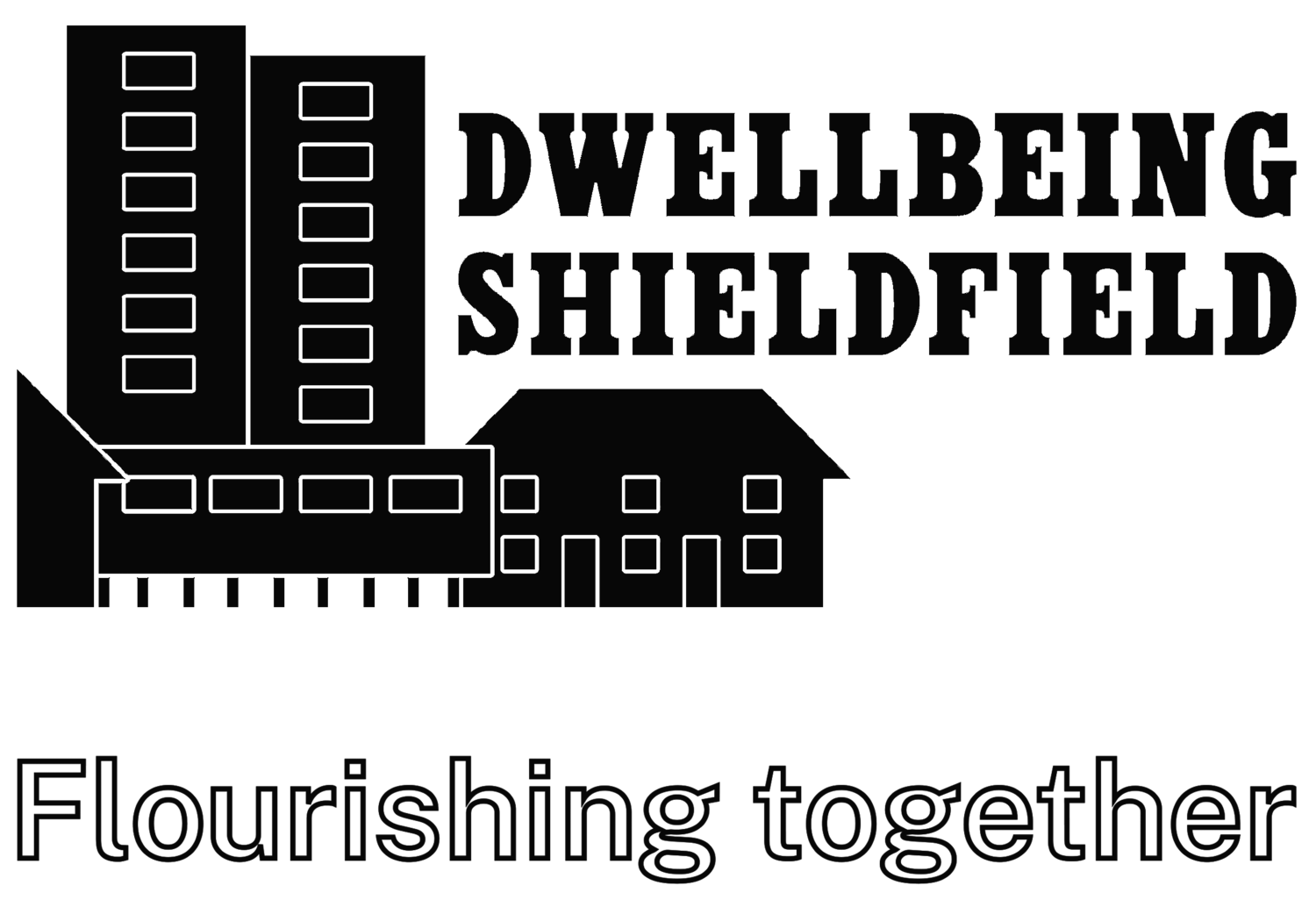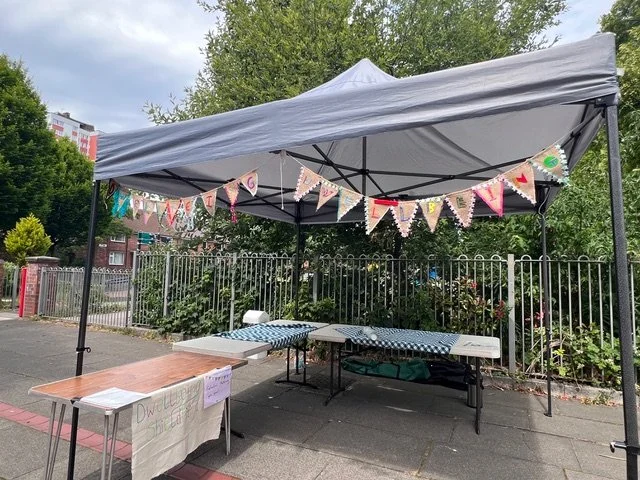The Gazebo Moment: Working at the Pace of the Community
A reflection on collective rhythm and understanding how we work together
At the recent Solstice celebration we spent a glorious afternoon together. There was something for everyone - yoga in the wildflower garden, delicious food from our community chefs and dancing to live music. There was genuine joy as families and friends old and new shared time together in Shieldfield. However, one of the most memorable moments for me happened before the main events began.
In the morning as volunteers began to set up the event a few of us found ourselves tasked with putting up two gazebos in Wretham Place. The morning was very sunny and we were already too hot and tired from moving equipment around the neighbourhood. We were keen to get the tents up as quickly as possible so we could enjoy their shade. Each gazebo had completely different mechanisms - one fairly straightforward, one a bit more complex. After getting the tents out of their bags which was a challenge in itself, we stood with one person at each corner of the tent and another person on 'troubleshooting duty', dipping under the fabric covers to untie this, clip that, and unravel the other. What happened next reminded me of important things about how we actually work together effectively.
To start with, we carried on as you might expect - each person trying to get their corner of the gazebo set up as quickly as possible. When someone worked out their corner mechanism and extended it to the tent's full height it seemed like progress. But it wasn't. In fact, it made everything harder. The gazebo became unstable, other corners became more difficult to manage, and the whole structure started to tip and warp. The person who extended their corner first couldn't really help anyone else because they were now holding their corner in place. Meanwhile, the rest of us were struggling with an increasingly awkward and unstable frame that was being pulled in different directions. It just wasn’t working.
We realised our predicament and stopped. We talked with each other about the process we needed to follow. Did everyone understand the steps? Could everyone see how the mechanism functioned? Did anyone need any help to reach? Then we started again, calmly. Instead of racing ahead individually, we naturally moved into a slower more synchronised way. You could hear people coaching each other through each step of the process "Have you pressed in the silver button...yes...now...mind your fingers and pull that black plastic bit towards you..."
We waited for each other. We checked in with each other. We made sure everyone understood the next move before anyone made it. When we all moved together at the pace of whoever was finding it most challenging, the gazebo went up smoothly, safely, with everyone still smiling and with all fingertips intact! Enjoying the shade under the gazebos and taking a breather before our next task, I realised we'd just experienced something much bigger than practical problem-solving. We'd lived through a perfect example of how Dwellbeing approaches community work more broadly.
In our neighbourhood activities - whether community chefs learning new recipes together, members working on public space design, or stewards navigating complex organisational decisions - we find that slowing down to work at the pace of whoever needs more time creates better outcomes for everyone. It’s not about limiting our thinking or holding back the most capable people, but about recognising that sustainable community work requires everyone to understand and own the process, not just the outcome. When people are coached through each step, when they understand why we're doing things in a particular way, when they've had time to ask questions and get comfortable - that's when real capacity is built.
The gazebo could have been erected faster by a set of people who already knew how. But then it would have remained mysterious to everyone else, and we'd have created a dependency rather than learning a new skill together. So much of what we're trying to do in community development happens in these small, practical moments. How we set up spaces, how we share tasks, how we make decisions about where tables should go or who carries what - these aren't just logistics. They're the places where we practice the kind of patient, inclusive collaboration that makes everything else possible.
The gazebo erected and festooned with Dwellbeing’s bunting
These reflections emerge from ongoing community engagement and research work with Dwellbeing Shieldfield, exploring how we create inclusive spaces for neighbourhood collaboration. If you’d like to know more about Dwellbeing or this research, please chat with me at our next event or email me at Helen2.Simmons@northumbria.ac.uk.

